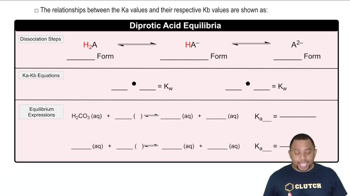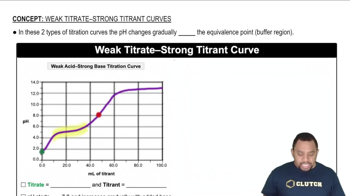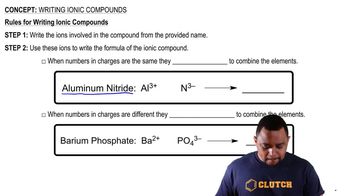Here are the essential concepts you must grasp in order to answer the question correctly.
Diprotic Acids
Diprotic acids are acids that can donate two protons (H⁺ ions) per molecule in an aqueous solution. An example is phosphorous acid (H₃PO₃), which can lose two protons in two steps, resulting in the formation of H₂PO₃⁻ and HPO₃²⁻ ions. Understanding the behavior of diprotic acids is essential for predicting their dissociation and the resulting pH of solutions.
Recommended video:
3 forms of Diprotic Acids
Strong vs. Weak Acids
Strong acids, like nitric acid (HNO₃), completely dissociate in water, releasing all their protons, which results in a high concentration of H⁺ ions and a low pH. In contrast, weak acids, such as phosphoric acid (H₃PO₄), only partially dissociate, leading to a lower concentration of H⁺ ions and a higher pH. This distinction is crucial for understanding acid strength and its implications in chemical reactions.
Recommended video:
Weak Acid-Strong Base Titration Curve
Basicity of Phosphate Compounds
Phosphate compounds, such as sodium phosphate (Na₃PO₄), can produce basic solutions when dissolved in water. This occurs because the phosphate ion (PO₄³⁻) can react with water to form hydroxide ions (OH⁻), increasing the pH of the solution. Recognizing the basic nature of phosphate solutions is important for applications in agriculture and environmental chemistry.
Recommended video:
Rules for Writing Ionic Compounds





